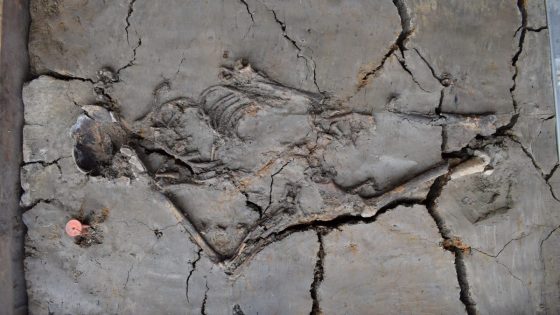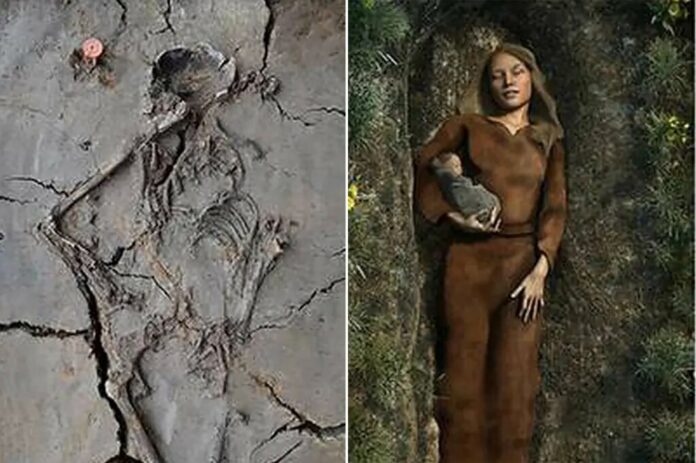A Remarkable Discovery
In the heart of the Netherlands, a remarkable discovery has unfolded – a 6,000-year-old grave holding the remains of a mother and her infant child, their eternal embrace preserved through the ages. Archaeologists working at a site in Nieuwegein, in the province of Utrecht, uncovered this poignant scene, shedding light on the burial practices of ancient hunter-gatherer communities.
The Tender Embrace
As the exhumed skeletons were examined, one particular grave caught the attention of the experts. The right arm of a 30-year-old woman’s skeleton was bent at an unusual angle, cradling something close to her chest. Upon closer inspection, the bone fragments of an infant were revealed, nestled in the protective embrace of its mother.

Project leader Helle Molthof expressed the profound impact of this discovery, stating, “The posture of the woman’s body did not conform to what we had found so far, that is, bodies whose limbs are placed parallel to the body. We then made the moving discovery that she was in fact cradling a little baby.”
A Glimpse into the Past
Among the bone fragments, a tiny jaw holding several baby teeth offered a poignant glimpse into the past. Scientists concluded that the infant had died when it was just a couple of months old, yet its mother’s loving embrace endured through the millennia.
Molthof pondered the significance of this find, remarking, “It really makes an impression when you find little baby teeth buried in clay for 6,000 years and see how similar they are to all those milk teeth that are kept in matchboxes by parents everywhere.”
Unveiling Ancient Rituals
This remarkable grave promises to shed light on the burial ceremonies of the hunter-gatherer communities who once lived along the banks of the River Vecht. As Molthof explained, “We know how they lived, what sort of food they ate, what their houses were like but we don’t know very much yet about how they buried their dead and what happened to the children.”
Through this discovery, archaeologists hope to gain invaluable insights into the rituals and traditions surrounding death and mourning in these ancient societies, offering a poignant reminder of the universal bonds of love and loss that transcend time and culture.

